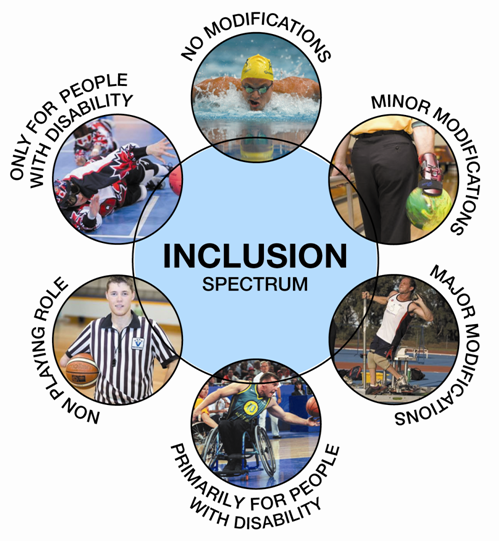
Sport is not ‘one size fits all’. The focus for clubs should be on finding practical ways for all people to participate in sport at a level of their choice. Inclusion is about providing this range of options.
Lack of choice is often given as a reason for non-participation, especially for people with disability. So, what’s the best way to create more choice for more people? Talk to the people who want to be involved. They can tell you what services they are after, what prevents them from being involved and what needs to be changed.
A key question to also ask when considering choice is “does your club reflect the community that it is in?” If not, then it is likely that you are not offering a diversity of choices that they want. Some simple adaptations to equipment, rules or policies may open up choices for marginalised groups of people.
An effective tool that has been used with many sports to identify the range of choices that could be possible for people with disability is The Inclusion Spectrum.

A common misconception about inclusion is that it is solely about including people with disability in regular sport activities without any modification. Inclusion encompasses many different options in different settings. Inclusion in sport can be viewed in terms of a spectrum. Each section of the spectrum is as important as the next, and ideally there would be programs for people with disability available in all sections to choose from.
Examples of the inclusion spectrum:
- No modifications: an athlete with an intellectual disability may train and compete with athletes without intellectual disability at a local swimming club
- Minor modifications: a vision impaired tenpin bowler using a rail for support
- Major modifications: a seated shot-putter competing under separate rules using modified equipment against other athletes with disability in an integrated track and field competition
- Primarily for people with disability: athletes with disability and their able-bodied peers combine to form teams for the purpose of developing a wheelchair basketball competition
- Only for people with disability: goal ball players participating in a competition exclusively for people with vision impairments
- Non-playing role: people with disability can be officials, coaches, club presidents, volunteers and spectators.
The following factors will influence the section/s of the spectrum an individual chooses to participate in:
- their functional ability
- the sport in which they are participating
- the opportunities within their local environment\their personal preferences.
The inclusion spectrum allows games and activities to be delivered in different ways, with more options. The aim is to encourage higher quality participation by people with disability, both with or away from their able-bodied peers. Clubs can provide a range of options by adapting and modifying their sport in different environments.
Download the Sport Australia Information Sheet on The Inclusion Spectrum here.
Watch the interview with Hamish Macdonald.


